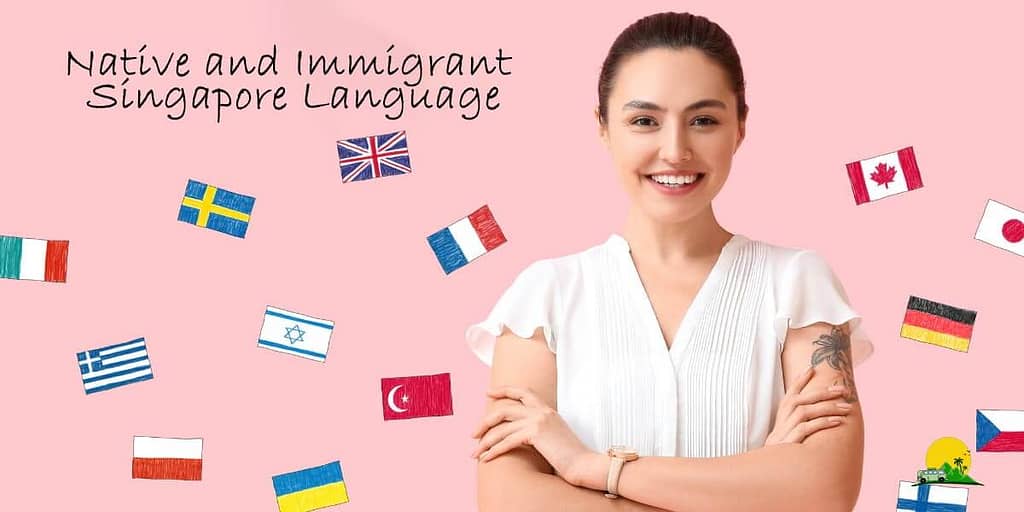Rich Linguistic Tapestry – Singapore Language

Rich Linguistic Tapestry – Singapore Language
Singapore is a multicultural nation in Southeast Asia and is renowned for its linguistic diversity. With over four million residents representing different ethnicities and cultural backgrounds, it is fitting that Singapore does not have a single official Singapore Language. Instead, the country recognizes four official Singapore Language—English, Mandarin, Malay, and Tamil—that reflect its heritage as a melting pot of cultures.
However, Singapore’s linguistic landscape extends far beyond its official tongues. Over the centuries, immigrants have brought a myriad of other languages and dialects that contribute to the nation’s rich tapestry. In addition, the unique conditions of Singapore’s development have led to the evolution of locally developed languages like Singlish.
index
ToggleSingapore’s Official Languages
As a multicultural and multi-ethnic society, Singapore recognizes four official Singapore Language—English, Mandarin, Malay and Tamil—representing its major ethnic communities. These official languages are important in the country’s administration, education system and national identity.
English
English serves as the dominant language of business, education, and government due to Singapore’s history under British rule. A unique Singaporean variety, “Singlish,” has been developed to incorporate elements of other local Singapore Language. English acts as a crucial lingua franca for Singapore’s diverse population to communicate.
Mandarin
Mandarin is the official Chinese language, and it was chosen to unite Singapore’s various Chinese dialects under a standardized form. It is widely used in education and media. While other dialects like Hokkien were once discouraged, interest in learning them has resurgent recently among young Singaporeans.
Malay
Malay has a special status as Singapore’s national language due to historical and cultural reasons. As the original lingua franca, Malay served as the shared tongue for early immigrants from different regions.
Today, Malay continues to represent Singapore’s multi-ethnic identity and is used in national symbols, ceremonies and certain government communications. It remains the primary language for the Malay-Muslim community, comprising around 15% of citizens.
Tamil
Tamil is the main Singapore Language of the 8% Indian Tamil population who trace their ancestry to Southern India. As an official language, Tamil preserves the unique cultural heritage of one of Singapore’s earliest immigrant communities.
It is used in Tamil media and religious and cultural domains. The government supports Tamil language institutions in promoting Tamil language proficiency and arts among the community.
Native and Immigrant Singapore Language

Beyond its official languages, Singapore is also home to numerous native and immigrant languages that reflect the diverse backgrounds of its people. Let us explore some of the more prominent non-official languages in Singapore.
Chinese Dialects
Various Chinese dialects like Hokkien, Teochew and Cantonese remain widely spoken in Singapore, especially among the older generation. Hokkien is estimated to have over 200,000 speakers locally, while Teochew has around 100,000.
These dialects play an important role in preserving Chinese cultural practices related to food, festivals, opera and religious traditions. They are used informally within Chinese dialect groups and passed down through families.
Malay Dialects
Within the Malay community, subgroups speaking different Malay dialects like Betawi, Javanese and Boyanese reflect their ancestral roots in the Malay Archipelago.
These dialects add more nuances to the Malay language and culture in Singapore. They can be heard in traditional performing arts, religious sermons and inter-generational conversations among Malay families.
Indian Languages
Apart from Tamil, other Indian languages with sizeable local populations include Telegu, Hindi, Punjabi and Malayalam. They are maintained through community associations, media, and religious/cultural events that cater to different Indian ethnic groups.
For example, Punjabi is celebrated during Sikh festivals, while Malayalam connects the Kerala Christian community to its South Indian heritage through churches, music and literature.
Filipino Languages
With an increasing number of Filipino migrant workers and professionals, Filipino languages like Tagalog and other regional varieties have gained more prominence in Singapore in recent years.
They are used within the Filipino community for social bonding and in local churches and associations serving Filipinos. Tagalog mass and programs help preserve their cultural practices in a foreign land.
Other Immigrant Languages
A variety of other languages from all over Asia, Europe and other regions have been brought to Singapore by immigrants throughout its history. This includes Indonesian, Japanese, Korean, French, German, Portuguese and more.
While most are maintained informally within ethnic communities, they contribute to Singapore’s rich linguistic diversity and remind us of the global origins of its people. In the future, new immigrant languages will continue emerging as well.
Locally Developed Varieties: Singlish
Singapore’s unique conditions as a multicultural melting pot have led to the evolution of locally developed language varieties. Singlish is The most well-known creole that mixes English with other languages and developed as a common tongue for early immigrants.
Singlish is widely spoken colloquially by Singaporeans of all ethnicities. It has a distinctive vocabulary and grammatical structure influenced by languages like Malay, Hokkien and Tamil. Terms like “lah” and “lor” add local flair to conversations.
While the government promotes Standard English, Singlish remains a symbol of local identity and is used informally among friends. It connects all Singaporeans through shared linguistic experiences regardless of their mother tongue.
Singapore Language in Education
Education plays a pivotal role in language planning and development in multilingual Singapore. The government’s emphasis on bilingualism has significantly shaped the country’s linguistic landscape.
In schools, English is the main medium of instruction, and students are required to learn a “Mother tongue” (their ethnicity’s official language) as well. This aims to develop strong bilingual abilities and preserve ethnic mother tongues and cultures.
Students receive English language arts and their Mother Tongue as separate subjects at the primary level. In secondary school, they can choose between taking their Mother Tongue as a first language or taking it at a basic proficiency level.
At junior and university levels, selected Mother Tongue literature and related courses are offered as electives to encourage continued language development. Private tutoring and supplemental language schools also help students attain higher standards.
Singapore Language in the Community

Beyond education and administration, languages are active in community life and domains across Singapore. Here are some examples:
Religious domains: Languages like Malay, Mandarin, Tamil, Arabic and others are used for sermons, prayers and religious classes according to different faiths.
Media: Television, newspapers and websites catering to different language groups help preserve community languages and cultures.
Entertainment: Local dramas, movies and music in various languages unite communities through shared artistic enjoyment.
Workplace: While English dominates the workplace, languages like Mandarin are gaining prominence due to economic ties with China.
Inter-generational bonding: Younger Singaporeans converse with grandparents in their native dialects and learn about cultural traditions.
Festivals: Singapore Language adds vibrancy to celebrations of different ethnic traditions through performances, prayers and cuisine.
Informal domains: Languages like Singlish, dialects and immigrant tongues connect friends and bond communities in informal settings.
This shows how languages are actively lived and given meaning beyond official functions to unite and enrich communities in Singapore. They play an integral role in cultural preservation and social cohesion.
Read More: Language Learning Adventures: How to Master a Foreign Language While Traveling
Singapore Language Policy and Planning
As a young nation, language planning has been crucial for Singapore to achieve social and economic goals amid its multilingual landscape. Some key aspects of its language policy include:
- Promoting English as the common language while preserving ethnic languages and cultures.
- Designating four official languages to represent major communities and promote multicultural identity.
- Adopting bilingual education to develop human capital with strong English and Mother Tongue abilities.
- Actively promoting Mandarin to strengthen economic ties with China and cultural roots.
- Supporting Mother Tongue learning through various initiatives even after formal education.
- Encouraging the use of all official languages in appropriate domains of administration, law, media, etc.
- Accommodating new immigrant languages through supplemental language schools.
- Developing local varieties like Singlish while standardizing English for global effectiveness.
Conclusion
In conclusion, a walk through Singapore’s linguistic landscape reveals a tapestry intricately woven with history, heritage and the aspirations of its people. Singapore Language represent the cultural identities that make this nation unique – a microcosm of the world within a city.
Through prudent planning and active community participation, Singapore continues weaving new threads to its linguistic tapestry, ensuring an inclusive future where all may find their voice. Its experience offers valuable insights for other multilingual societies seeking to reap diversity’s rewards amid change challenges.
Recent Posts
Contact Us
+1 437 499 4559










